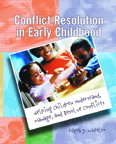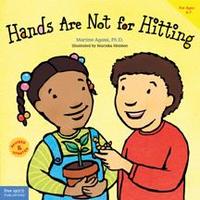WHACK! SLAM! BANG! — Aggression – Virtual Toolkit
Professional Development Activity
Begin by reading the Growing Ideas: WHACK! SLAM! BANG!— Aggression Tipsheet (PDF) and completing the Growing Ideas Into Action Handout (PDF) – A resource to use as you read and use the tipsheets.
Training Materials to use right away:
- Caring about Caring: What Adults Can Do to Promote Young Children’s Prosocial Skills (PDF) article from the National Association for the Education of Young Children (NAEYC).
- Children Who Have Serious Conflicts- Part 2: Instrumental Aggression (PDF) – 2011, National Association for the Education of Young Children (NAEYC)
Try, Review, Reflect and Plan:
Caring about Caring considers what research has to say about helping children learn prosocial behaviors. The Children Who Have Serious Conflicts- Part 2: Instrumental Aggression discusses some of the causes of this type of aggressive behavior and suggestions on how to respond.
- Click on the first website link above to to download the PDF Caring about Caring: What Adults Can Do to Promote Young Children’s Prosocial Skills.
- Click on the second website link above to download the PDF Children Who Have Serious Conflicts- Part 2: Instrumental Aggression.
- Select and try out some of the strategies shared in these resources in your program.
- Use the WHACK! SLAM! BANG! — Aggression Self-Reflection Guide and Documentation Sheet (PDF) to:
- Review, reflect and plan your work with children.
- Document your training hours.
Highly Recommended Resource:
Wheeler, E.J. (2004). Conflict resolution in early childhood: Helping children understand and resolve conflicts. Upper Saddle River, N.J.: Pearson Education, Inc.
NAEYC On-line bookstore annotation:
This book examines the nature of conflict among 2- to 8-year-olds from a research-based, constructivist/ecological perspective. The author thoroughly discusses children’s conflicts, emphasizing that peer and community culture make up the foundation for preventing and resolving conflict, and advocates teaching conflict resolution skills via a “three-layer-cake” of understanding, management, and resolution. Integrating themes of caring, building classroom community, connecting curriculum, involving family and community, and responding to the current educational climate. Coverage presents ways to create a caring classroom – both in physical environment and curriculum, to work with other adults in a child’s life, and to implement peer mediation. Throughout, the material stresses the need to understand all children in light of applicable theory and current “best practice” in culturally responsive and inclusive classrooms. For current and prospective teachers, guidance counselors, and daycare providers.
Children’s Book Selection:
Agassi, M. (2009). Hands are Not for Hitting. Minneapolis, MN: Free Spirit Publishing.
From Publisher’s annotation:
“Hands are not for hitting. Hands are for saying hello. . .” And for playing, creating, helping, working, learning, encouraging, taking care of oneself, and so many more good things.
This fresh edition of a Free Spirit classic presents charming new illustrations along with the familiar encouraging message of the original. Psychologist Martine Agassi helps young children understand that violence is never okay, that they can manage their anger and other strong feelings, and that they’re capable of positive, loving actions.
Especially at an age when children are interacting more with others and starting school, they need to know that hitting is unacceptable. Words tell—and pictures show—the many wonderful things kids can do with their hands instead of hitting.
Made to be read aloud, Hands Are Not for Hitting also includes a special section for adults, with ideas for things to talk about and activities to do together.”
Interested in additional information on this topic? Visit our WHACK! SLAM! BANG! Aggression Selected Resources page.
Have a professional development plan? As you read the Growing Ideas Tipsheets, and use the Virtual Toolkit training materials be sure to place your handouts/documentation of this work in your personal professional development portfolio.
Updated: 07/25/2024



